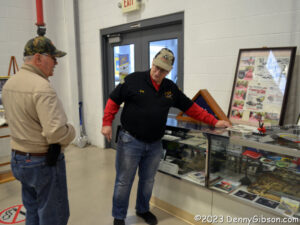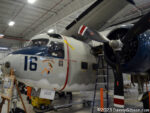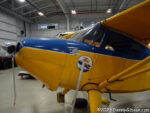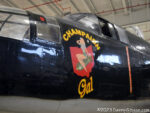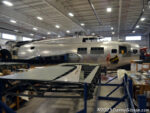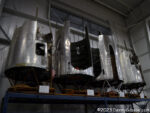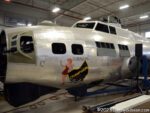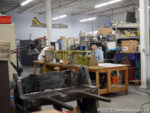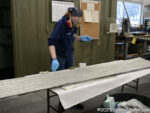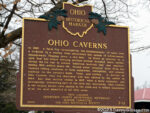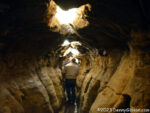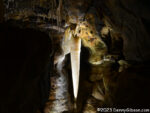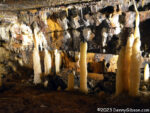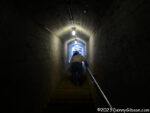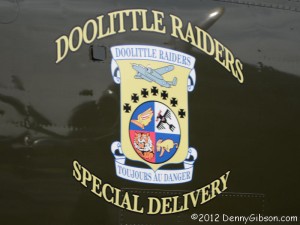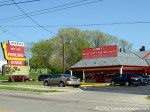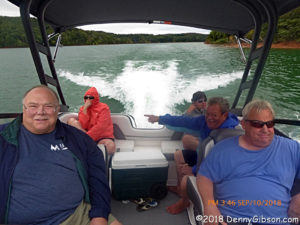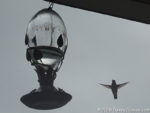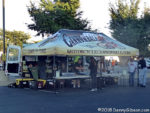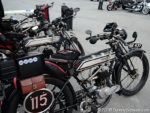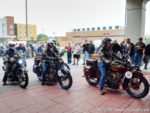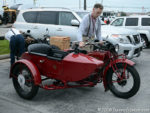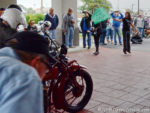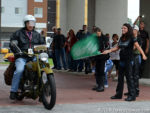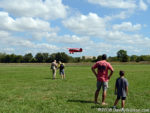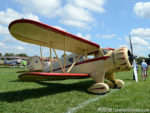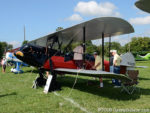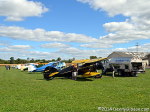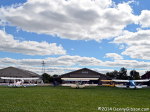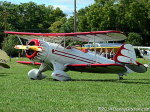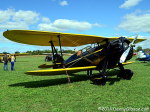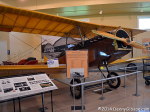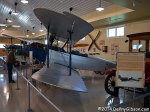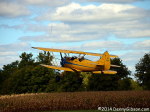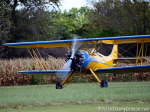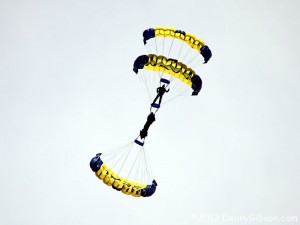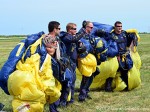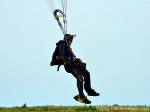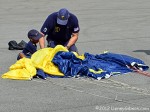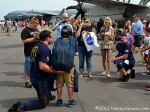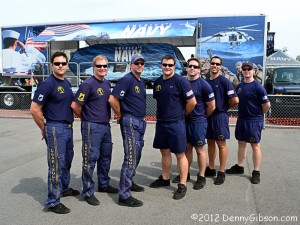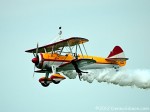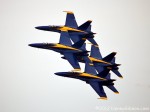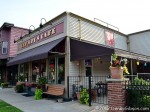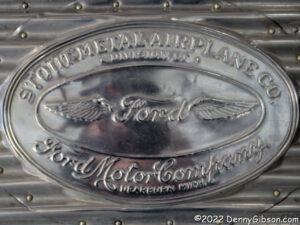 …did not carry me too far away but it did carry me nearly a century into the past.
…did not carry me too far away but it did carry me nearly a century into the past.
In 1922, Henry Ford invested in the startup Stout Metal Airplane Company then purchased the entire outfit two years later. The most notable of numerous modifications made to Stout’s original design was the addition of two engines. Ford Tri-Motor production began in 1926 and ceased in 1933 which coincided almost exactly with the period when the Waco Model 10 was produced. There were several Model 10s present at the Waco Fly-In I attended a couple of weeks ago.
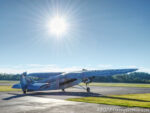 Ford produced 199 Tri-Motors in a span of eight years. In one year less (1927-1933), Waco turned out 1,623 Model 10s. Both airplanes were civilian passenger planes and both were icons of the early days of human flight but similarities between the two don’t go far beyond that. The Ford was all metal while the Waco was mostly cloth-covered wood. The Waco was an open bi-wing with a compartment for two passengers positioned in front of one for the pilot. The Ford was totally enclosed with a pilot and co-pilot sitting ahead of, depending on model, up to seventeen passengers. With a stewardess often part of the crew, it is generally thought of as the first airliner. That these two aircraft were contemporaries and both highly successful is certainly food for thought.
Ford produced 199 Tri-Motors in a span of eight years. In one year less (1927-1933), Waco turned out 1,623 Model 10s. Both airplanes were civilian passenger planes and both were icons of the early days of human flight but similarities between the two don’t go far beyond that. The Ford was all metal while the Waco was mostly cloth-covered wood. The Waco was an open bi-wing with a compartment for two passengers positioned in front of one for the pilot. The Ford was totally enclosed with a pilot and co-pilot sitting ahead of, depending on model, up to seventeen passengers. With a stewardess often part of the crew, it is generally thought of as the first airliner. That these two aircraft were contemporaries and both highly successful is certainly food for thought.
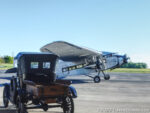 As of Friday, I can list another difference between a Waco 10 and a Tri-Motor. I have never flown in a Waco. On Friday, I took a ride in a Ford Tri-Motor 5-AT-B at the Greene County Airport near Xenia, Ohio. As was the case with the subjects of a couple of last year’s adventures (Smooth As Glass and An Airy Plane Ride), I learned of the touring Tri-Motor through Brandi Betts’ Make the Journey Fun blog. Brandi flew in the plane during its Chillicothe stop and reported on it here.
As of Friday, I can list another difference between a Waco 10 and a Tri-Motor. I have never flown in a Waco. On Friday, I took a ride in a Ford Tri-Motor 5-AT-B at the Greene County Airport near Xenia, Ohio. As was the case with the subjects of a couple of last year’s adventures (Smooth As Glass and An Airy Plane Ride), I learned of the touring Tri-Motor through Brandi Betts’ Make the Journey Fun blog. Brandi flew in the plane during its Chillicothe stop and reported on it here.

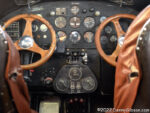
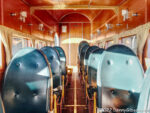 I guess I was eager to fly like it was 1929 and arrived at the airport before the airplane was even rolled out of the hangar. While chatting with some of the event organizers, I was told it was OK to step inside the plane for some photos which is how I got these shots of the empty interior. Sharp eyes might notice that not everything is triplicated in the cockpit. Tachometers plus pressure and temperature indicators for the outboard engines are mounted on wing struts near the engines.
I guess I was eager to fly like it was 1929 and arrived at the airport before the airplane was even rolled out of the hangar. While chatting with some of the event organizers, I was told it was OK to step inside the plane for some photos which is how I got these shots of the empty interior. Sharp eyes might notice that not everything is triplicated in the cockpit. Tachometers plus pressure and temperature indicators for the outboard engines are mounted on wing struts near the engines.
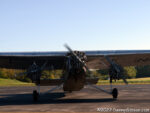 Before the day’s first flight, the Ford was taxied down the runway for refueling and I was able to watch the three radial engines fire up and the propellers start turning. The into-the-sun shot near the top of this post was also taken at the start of the gas run.
Before the day’s first flight, the Ford was taxied down the runway for refueling and I was able to watch the three radial engines fire up and the propellers start turning. The into-the-sun shot near the top of this post was also taken at the start of the gas run.
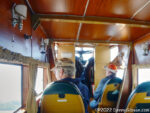
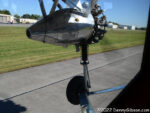 Shortly after the plane’s return, the first set of passengers was given a short briefing and permitted to board. Note that every seat is a window seat and every seat is an aisle seat. Six of the ten seats as well as the extra-charge co-pilot’s seat were occupied by males of a certain age. The other seats were empty.
Shortly after the plane’s return, the first set of passengers was given a short briefing and permitted to board. Note that every seat is a window seat and every seat is an aisle seat. Six of the ten seats as well as the extra-charge co-pilot’s seat were occupied by males of a certain age. The other seats were empty.
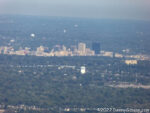
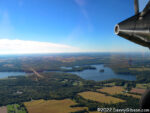
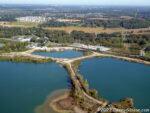 Not only was every seat a window seat, the windows were real windows and not those too-low and too-small foggy portholes found in today’s airliners. It was even possible to look out the opposite side of the plane. Photos here are of the water-filled gravel pits northeast of the airport, OH-73 crossing Ceasars Creek Lake, and downtown Dayton from eight or ten miles away. Plus I got a pretty good look at the ground during our final bank to return to the airport,
Not only was every seat a window seat, the windows were real windows and not those too-low and too-small foggy portholes found in today’s airliners. It was even possible to look out the opposite side of the plane. Photos here are of the water-filled gravel pits northeast of the airport, OH-73 crossing Ceasars Creek Lake, and downtown Dayton from eight or ten miles away. Plus I got a pretty good look at the ground during our final bank to return to the airport,
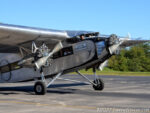
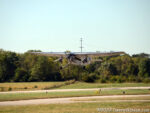
 Assuming the event is more heavily attended during the weekend, showing up on Friday morning worked out well in avoiding crowds. The downside was that I wanted to take photos of the next flight and I had to wait a while for it to fill. When it did, I again got to see those props start turning then watch the plane head into the sky.
Assuming the event is more heavily attended during the weekend, showing up on Friday morning worked out well in avoiding crowds. The downside was that I wanted to take photos of the next flight and I had to wait a while for it to fill. When it did, I again got to see those props start turning then watch the plane head into the sky.

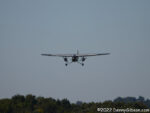 Flights are about half an hour from engines on to engines off with fifteen to twenty minutes of that being airborne. Having waited to see the takeoff, it only made sense to wait for the landing.
Flights are about half an hour from engines on to engines off with fifteen to twenty minutes of that being airborne. Having waited to see the takeoff, it only made sense to wait for the landing.
The Transcontinental Ait Transport logo this plane now wears was also the one it wore first. The plane first flew on December 1, 1928, and became the property of TAT in January 1929. Its complete history is told here. The TAT story is a short but important one. Although crossing the continent was not accomplished entirely in the air, the company did put Ford Tri-Motors to work for about a year expediting travel between the coasts. Overnight trains were used to connect New York with Columbus, OH, and Waynoka, OK, with Clovis, NM. Tri-Motors carried travelers between Columbus and Waynoka and between Clovis and Glendale, CA. The fare for a forty-eight-hour one-way trip was $352.
Rides will be available at the Greene County – Lewis A Jackson Regional Airport until 5:00 PM today (Oct 2, 2022) and at some other spots in Ohio, Indiana, and Kentucky during the rest of October. Check it out here.
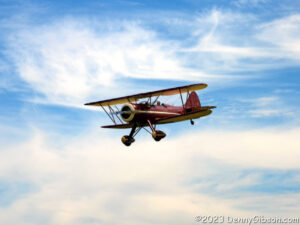 It was one hundred years ago that the Weaver Aircraft Company moved to Troy, Ohio, and became Advance Aircraft Company. The company’s origins were in 1919 and some name changes had already occurred. One more was yet to come. The planes the company built were always known by the Weaver-based acronym WACO and in 1929 the company formally became the Waco Aircraft Company. The company no longer exists but its memory is kept alive at the WACO Museum and Airfield
It was one hundred years ago that the Weaver Aircraft Company moved to Troy, Ohio, and became Advance Aircraft Company. The company’s origins were in 1919 and some name changes had already occurred. One more was yet to come. The planes the company built were always known by the Weaver-based acronym WACO and in 1929 the company formally became the Waco Aircraft Company. The company no longer exists but its memory is kept alive at the WACO Museum and Airfield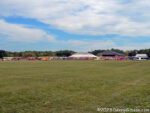 I have attended the annual WACO Fly-In a few times including last year. My first visit was in 2006 and I also documented a visit in 2014. This year’s event was much bigger than any of those. The normally ample parking near the museum was filled long before we got there. We parked in an area on the other side of the airfield and rode a shuttle back.
I have attended the annual WACO Fly-In a few times including last year. My first visit was in 2006 and I also documented a visit in 2014. This year’s event was much bigger than any of those. The normally ample parking near the museum was filled long before we got there. We parked in an area on the other side of the airfield and rode a shuttle back.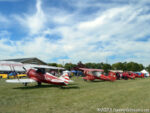
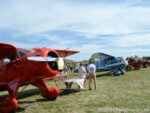
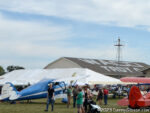 Organizers had hoped to attract 100 WACOs for this 100th anniversary. I’m pretty sure that didn’t happen but there were certainly a lot more there than the twenty or less I’ve seen in the past. I estimated there were 50 to 60 WACOs on the ground. Unlike in previous years, the main airplane parking area was reserved exclusively for WACOs with all other planes relegated to the far side of the airstrip.
Organizers had hoped to attract 100 WACOs for this 100th anniversary. I’m pretty sure that didn’t happen but there were certainly a lot more there than the twenty or less I’ve seen in the past. I estimated there were 50 to 60 WACOs on the ground. Unlike in previous years, the main airplane parking area was reserved exclusively for WACOs with all other planes relegated to the far side of the airstrip.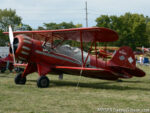 In a conversation with another attendee, I learned that this plane was one that I used to watch from the banks of the Little Miami River as it flew over Kings Island in a daily air show. This was in the 1970s when the name WACO would not have meant much to me.
In a conversation with another attendee, I learned that this plane was one that I used to watch from the banks of the Little Miami River as it flew over Kings Island in a daily air show. This was in the 1970s when the name WACO would not have meant much to me.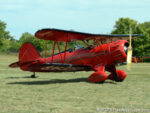
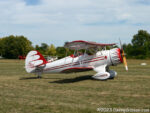
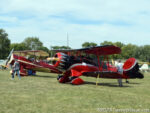 WACOs are beautiful machines whether they are on the ground…
WACOs are beautiful machines whether they are on the ground…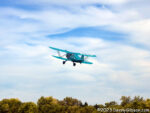
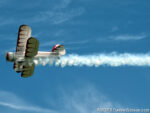
 …or in the air…
…or in the air…

 …or somewhere in between.
…or somewhere in between.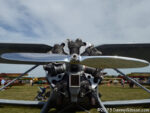 Heck. Even the naked engines can be kind of pretty.
Heck. Even the naked engines can be kind of pretty.
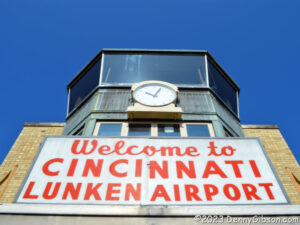
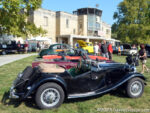
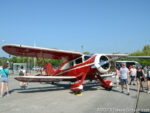
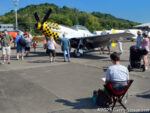


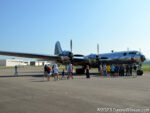


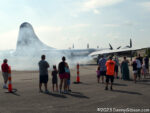
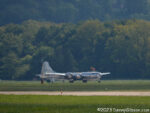



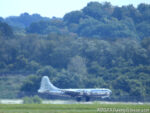


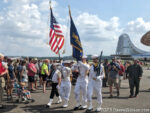
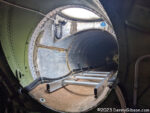

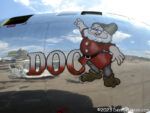
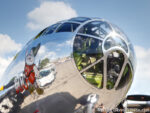

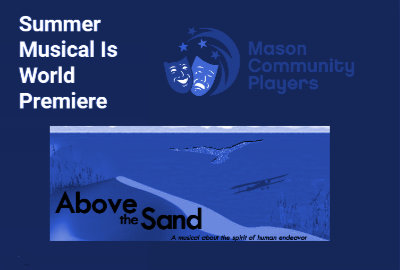 When I wrote about
When I wrote about 
